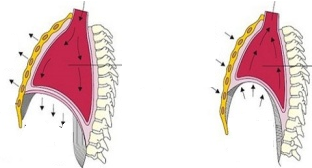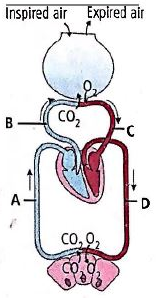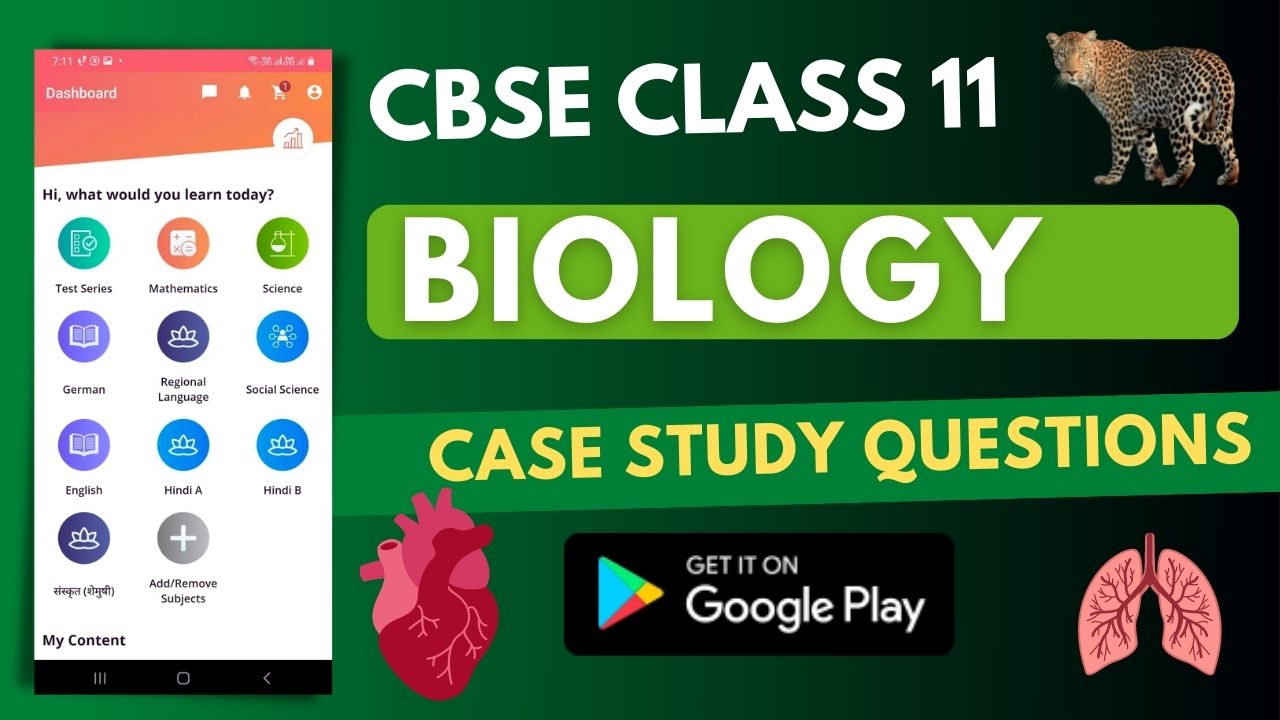
myCBSEguide App
Download the app to get CBSE Sample Papers 2023-24, NCERT Solutions (Revised), Most Important Questions, Previous Year Question Bank, Mock Tests, and Detailed Notes.
Install NowIf you are finding it difficult to solve Class 11 Biology Case Study Questions, you are not alone. Many students face difficulties in solving such questions, as they require in-depth knowledge of the subject. However, with the right resources and guidance, it is possible to overcome these difficulties. One of the best resources for Class 11 Biology Case Study Questions is the myCBSEguide app.
Class 11 Biology Case Study Questions
myCBSEguide provides detailed information and Class 11 Biology Case Study Questions that can help you understand the concepts better. Class 11 Biology students can also find several practice questions at the end of each chapter that can help Class 11 Biology students in understanding the concept better.
Biology: The study of living organisms
Biology is the study of life and all living things. It is a natural science that covers a wide range of topics, from the structure and function of the human body to the behavior of plants and animals. Class 11 biology students learn about the various branches of biology, such as anatomy, physiology, ecology, and evolution. In addition, they also study the cell, the building block of all living things. By understanding how cells work, students can better understand how the body works as a whole.
Class 11 students entering the world of Biology
For Class 11 students, biology is the foundation for Class 12 CBSE students. It is a vital topic that helps students grasp the fundamental notions of life and living beings. Cell structure and function, genetics, evolution, ecology, and plant and animal physiology are all themes addressed in biology. Biology is a fascinating topic that teaches students about the natural world around them. Biology is an excellent foundation for Class 11 CBSE students who want to pursue a career in medicine. Biology is critical for understanding the human body and its processes, as well as developing medical remedies.
Significance of Biology for class 11 students
- Biology encourages students to learn the fundamentals of biology.
- It promotes a rational/scientific attitude toward issues such as population, environment, and development by encouraging the acquisition of new information and its application to individuals and society.
- It raises public knowledge of environmental issues, problems, and remedies.
- It raises students’ understanding of the diversity of living species and fosters respect for other living beings.
- It understands that even the most complicated biological phenomena are based on fundamentally simple processes.
Case study questions in Class 11 Biology
Case studies are a part of to Class 11 biology examination paper pattern. These case studies can be used to assess a student’s understanding of a subject as well as their ability to apply that understanding in a real-world context. Incorporating case study questions into Class 11 Biology can provide students with a more hands-on and realistic experience with the subject. Class 11 Biology students can better learn how chemical concepts are utilized in the real world by going through real-life problems. Class 11 Biology Case study questions can also aid in the development of critical thinking and problem-solving abilities.
Examples of Class 11 Biology Case Study Questions
We must solve a range of Class 11 Biology case study questions in order to achieve high grades in Biology. Class 11 Biology students must be seeking some examples of case study questions in order to improve their grades. myCBSEguide has prepared a variety of Class 11 Biology case study questions that will undoubtedly assist all students studying the subject. We have compiled a selection of Class 11 Biology case study questions for you. Have a look at the following Class 11 Biology case study question examples.
Class 11 Biology case study questions 1
Read the following and answer any four questions:
The detailed structure of the membrane was studied only after the advent of the electron microscope in the 1950s. Meanwhile, chemical studies on the cell membrane, especially in human red blood cells (RBCs), enabled the scientists to deduce the possible structure of the plasma membrane. These studies showed that the cell membrane is composed of lipids, proteins and carbohydrates.
- Which component of the plasma membrane is arranged as a bilayer?
- Nucleic acid
- Lipid
- Protein
- Carbohydrate
- The lipid component of the membrane mainly consists of ________.
- Phosphoglycerides
- Amino
- acids
- Glycoproteins
- What percentage of the membrane of human erythrocytes consists of proteins?
- 40
- 70
- 52
- 66
- Depending on the ease of extraction, membrane proteins can be of ________ types.
- Three
- Two
- Four
- Five
- Assertion: The plasma membrane is selectively permeable to some molecules present on either side of it.
Reason: Neutral solutes may move across the membrane by the process of simple diffusion.- Both assertion and reason are true, and reason is the correct explanation of the assertion.
- Both assertion and reason are true, and reason is not the correct explanation of the assertion.
- Assertion is true but reason is false.
- Both assertion and reason are false.
Answer Key:
- (b) The lipids are arranged in a bilayer in the plasma membrane with the polar head towards the outer sides and the hydrophobic tails towards the inner part.
- (a) The lipid component of the membrane mainly consists of phosphoglycerides.
- (c) In human beings, the membrane of the erythrocyte has approximately 52 percent protein and 40 percent lipids.
- (b) Depending on the ease of extraction, membrane proteins can be classified into two types – integral or peripheral.
- (b) The plasma membrane is selectively permeable to some molecules present on either side of it. Neutral solutes may move across the membrane by the process of simple diffusion along the concentration gradient, i.e., from higher concentration to the lower. Hence, both assertion and reason are true, but reason is not the correct explanation of the assertion.
Class 11 Biology case study questions 2
Read the following and answer any four questions:
Plastids are found in all plant cells and in euglenoids. These are easily observed under the microscope as they are large. They bear some specific pigments, thus imparting specific colours to the plants. Plastids consist of numerous membrane layers embedded in a material called the stroma. They have their own genome and ribosomes.
- The ________ are the colourless plastids of varied shapes and sizes with stored nutrients.
- Leucoplasts
- Chloroplasts
- Chromoplasts
- Carotenoids
- The __________ store proteins in grains.
- Amyloplasts
- Aleuroplasts
- Elaioplasts
- Carotenoid
- Which type of plastid stores carbohydrates in potatoes?
- Amyloplasts
- Aleuroplasts
- Elaioplasts
- Carotenoid
- The space limited by the inner membrane of the chloroplast is called the stroma.
- Matrix
- Cytoplasm
- Stroma
- Lumen
- Assertion: The chloroplasts contain chlorophyll and carotenoid pigments which are responsible for trapping light energy essential for photosynthesis.
Reason: They also impart colours to the parts of the plant as yellow, orange or red colour.- Both assertion and reason are true, and reason is the correct explanation of the assertion.
- Both assertion and reason are true, and reason is not the correct explanation of the assertion.
- Assertion is true but reason is false.
- Both assertion and reason are false.
Answer Key:
- (a) The leucoplasts are the colourless plastids of varied shapes and sizes with stored nutrients.
- (b) The aleuroplasts store proteins in grains.
- (a) Amyloplasts are leucoplasts store carbohydrates (starch) in potato.
- (c) The space limited by the inner membrane of the chloroplast is called the stroma.
- (c) The chloroplasts contain chlorophyll and carotenoid pigments which are responsible for trapping light energy essential for photosynthesis. The chromoplasts impart colours to the parts of the plant as yellow, orange or red colour. Hence, Assertion is true but reason is false.
Class 11 Biology case study questions 3
Read the following and answer any four questions:
In human beings, the lungs are situated in the thoracic chamber which is formed dorsally by the vertebral column, ventrally by the sternum, laterally by the ribs, and on the lower side by the dome-shaped diaphragm. The anatomical setup of the lungs in the thorax is such that any change in the volume of the thoracic cavity will be reflected in the lung (pulmonary) cavity. Such an arrangement is essential for breathing. Breathing involves two stages – inspiration and expiration. During inspiration, the atmospheric air is drawn in and during expiration, the alveolar air is released out.
- On average, a healthy human breathes ________ times/minute.
- 12 – 16
- 18 -20
- 70 – 72
- 80 – 84
- Air is sucked into the lungs by__________ .
- Ribs lift up
- Diaphragm flattens
- Ribs flatten
- Both ribs lift up and diaphragm flattens
- What term is used for the volume of air inspired or expired during normal respiration?
- Tidal volume
- Inspiratory Reserve Volume
- Residual Volume
- Vital Capacity
- The residual volume of air is ________.
- 6000 to 8000 mL
- 2500 mL to 3000 mL
- 1000 mL to 1100 mL
- 1100 mL to 1200 mL
- The following statements are drawn as conclusions for the image shown.

- The movement of air into and out of the lungs is carried out by creating a pressure gradient.
- Expiration can occur if the pressure within the lungs (intra-pulmonary pressure) is less than the atmospheric pressure.
- The diaphragm and a specialised set of muscles help in generation of pressure gradients.
- Expiration is initiated by the contraction of diaphragm which increases the volume of thoracic chamber in the antero-posterior axis.
Choose from below the correct alternative.
- a. Only I is true
- b. I and IV are true
- c. III and II are true
- d. I and III are true
Answer Key:
- (a) On an average, a healthy human breathes 12-16 times/minute.
- (d) When we breathe in, the ribs are lifted up and the diaphragm flattens which increases the size of the chest cavity. Because of this, the air is sucked into the lungs and fills the expanded alveoli.
- (a) Volume of air inspired or expired during normal respiration is called tidal volume.
- (d) Residual volume of air is the remaining air in the lungs even after a forcible expiration. This averages 1100 mL to 1200 mL.
- (d) The movement of air into and out of the lungs is carried out by creating a pressure gradient between the lungs and the atmosphere. Inspiration can occur if the pressure within the lungs (intra-pulmonary pressure) is less than the atmospheric pressure. The diaphragm and a specialized set of muscles – external and internal intercostals between the ribs, help in the generation of pressure gradients. Inspiration is initiated by the contraction of the diaphragm which increases the volume of thoracic chamber in the antero-posterior axis. Hence, statements I and III are true.
Class 11 Biology case study questions 4
Read the following and answer any four questions:
Exchange of gases also occurs between blood and tissues. O2 and CO2 are exchanged in these sites by simple diffusion mainly based on pressure/concentration gradient. The solubility of the gases, as well as the thickness of the membranes involved in diffusion, are also some important factors that can affect the rate of diffusion.
- Pressure contributed by an individual gas in a mixture of gases is called ________.
- Atmospheric pressure
- Partial pressure
- Differential pressure
- Capillary pressure
- ________ are the primary sites of exchange of gases.
- Alveoli
- Diaphragm
- Trachea
- Bronchi
- The diffusion membrane is made up of _________ major layers.
- Two
- Four
- Three
- Five
- What are the values of pO2 and pCO2 in the body tissues?
- pO2 – 104 mm Hg, pCO2 – 40 mm Hg
- pO2 – 104 mm Hg, pCO2 – 140 mm Hg
- pO2 – 95 mm Hg, pCO2 – 40 mm Hg
- pO2 – 40 mm Hg, pCO2 – 45 mm Hg
- The following statements are drawn as conclusions for the image shown.

- The given diagram represents the exchange of gases at the alveolus and the body tissues with blood and the transport of oxygen and carbon dioxide.
- The amount of CO2 that can diffuse through the diffusion membrane per unit difference in partial pressure is much lesser compared to that of O2.
- All the factors in our body are favourable for the diffusion of O2 from tissues to alveoli and that of CO2 from alveoli to tissues.
- The total thickness of the diffusion membrane is much less than a millimetre.
Choose from below the correct alternative.
- Only I is true
- I and IV are true
- III and II are true
- I and III are true
Answer Key:
- (b) Pressure contributed by an individual gas in a mixture of gases is called partial pressure.
- (a) Alveoli are the primary sites of exchange of gases.
- (c) The diffusion membrane is made up of three major layers.
- (d) The values of pO2 and pCO2 in the body tissues is: pO2 – 104 mm Hg, pCO2 – 40 mm Hg.
- (b) The given diagram represents the exchange of gases at the alveolus and the body tissues with blood and the transport of oxygen and carbon dioxide. The amount of CO2 that can diffuse through the diffusion membrane per unit difference in partial pressure is much higher compared to that of O2. All the factors in our body are favourable for the diffusion of O2 from alveoli to tissues and that of CO2 from tissues to alveoli. The total thickness of diffusion membrane is much less than a millimetre.
Dealing with Class 11 Biology case study questions
There are a number of different ways to approach Class 11 Biology case study questions, but the most important thing is to make sure that Class 11 Biology students answer all parts of the question and provide as much detail as possible. In some cases, you may need to research the topic further in order to be able to answer the Class 11 Biology case study questions fully.
When dealing with Class 11 Biology case study questions, it is also important to think about the different perspectives that might be involved. For example, if you are asked to evaluate a particular decision made by a scientist, you will need to consider the impact of that decision from both the scientist’s perspective and the perspective of those affected by the decision.
Answering case study questions can be challenging, but it is an important skill to develop if you want to pursue a career in fields such as business or law. With practice, Class 11 Biology students will be able to approach these questions with confidence and provide well-reasoned, detailed answers.
Class 11 Biology curriculum: As fascinating as Biology itself
The current curriculum of Class 11 Biology provides students with up-to-date principles as well as more extensive exposure to current topics in the discipline. Class 11 Biology curriculum also strives to emphasize the basic concepts that are shared by animals, plants, and microbes, as well as the link between Biology and other fields of study. Class 11 Biology structure provides for a straightforward, sequential flow of ideas. It connects the science of biology to actual life through technological advancements. It connects biological discoveries and breakthroughs to everyday issues including the environment, industry, health, and agriculture. The new curriculum of Class 11 Biology also emphasizes scientific ideas and their application, while ensuring that enough chances and opportunities for mastering and recognizing fundamental concepts remain within its framework.
CBSE Class 11 Biology (Code No. 044)
COURSE STRUCTURE
| Unit | Title | Marks |
| I | Diversity of Living Organisms | 15 |
| II | Structural Organization in Plants and Animals | 10 |
| III | Cell: Structure and Function | 15 |
| IV | Plant Physiology | 17 |
| V | Human Physiology | 17 |
| Total | 70 |
myCBSEguide: An app as intriguing as biology
If you’re looking for an app that’s as intriguing as biology, myCBSEguide is a perfect choice. With millions of downloads, it’s one of the most popular apps on the App Store, and for good reason. myCBSEguide offers extensive coverage of the CBSE curriculum, with detailed explanations of concepts, thousands of practice questions, case study questions and much more. Whether you’re a student, teacher, or parent, myCBSEguide is an essential tool for anyone wanting to learn more about biology.

Test Generator
Create question paper PDF and online tests with your own name & logo in minutes.
Create Now
myCBSEguide
Question Bank, Mock Tests, Exam Papers, NCERT Solutions, Sample Papers, Notes
Install Now